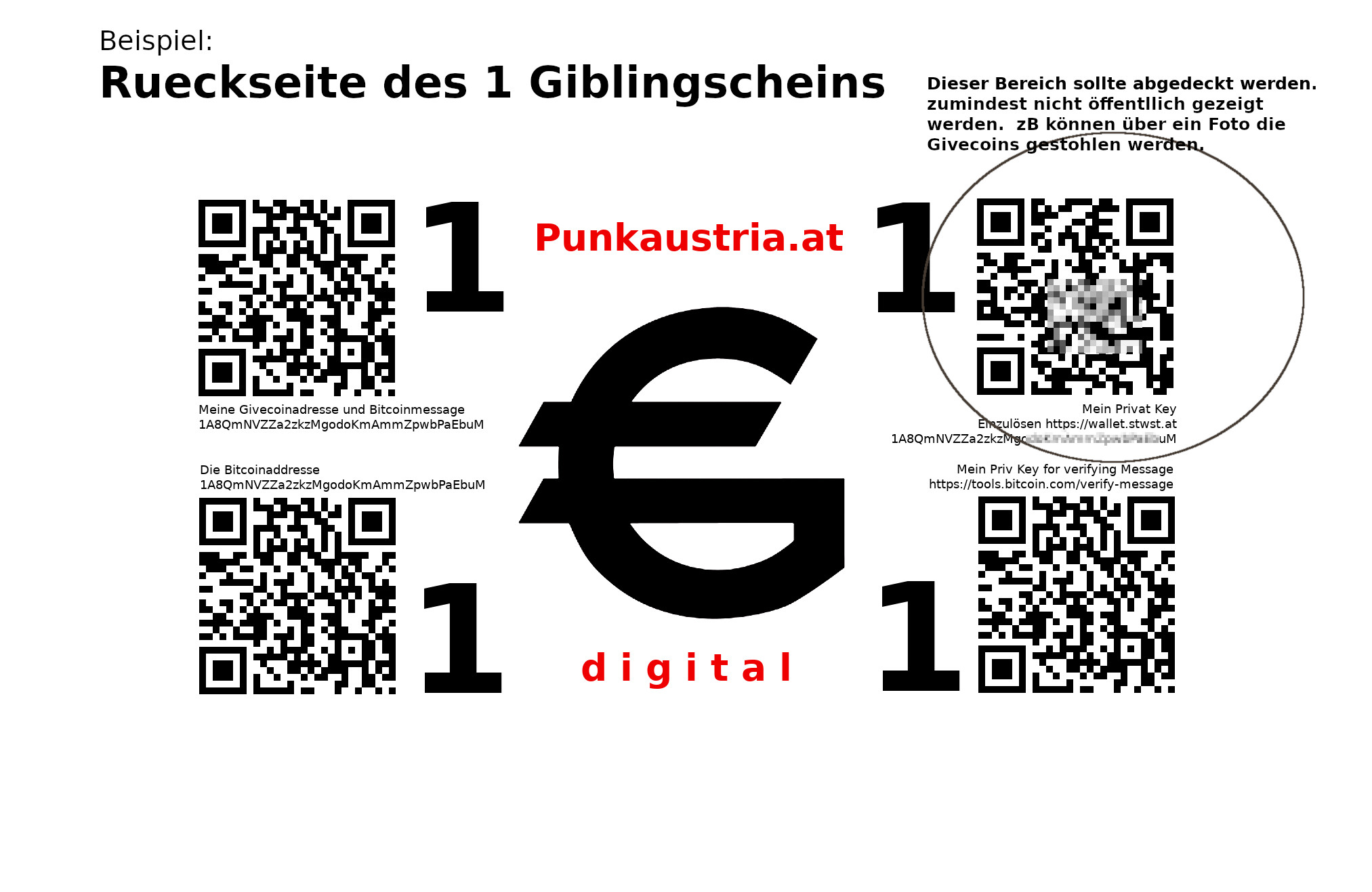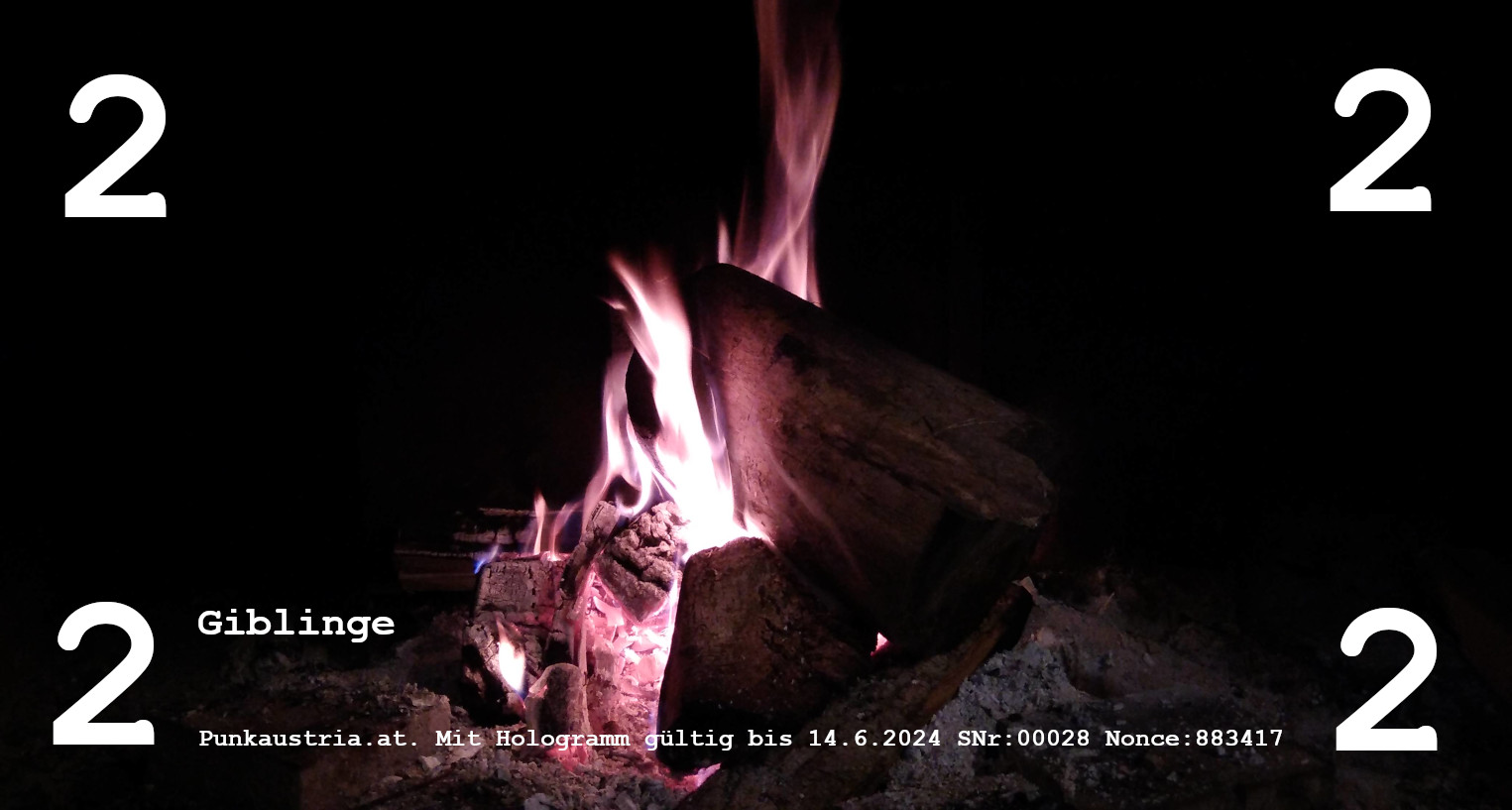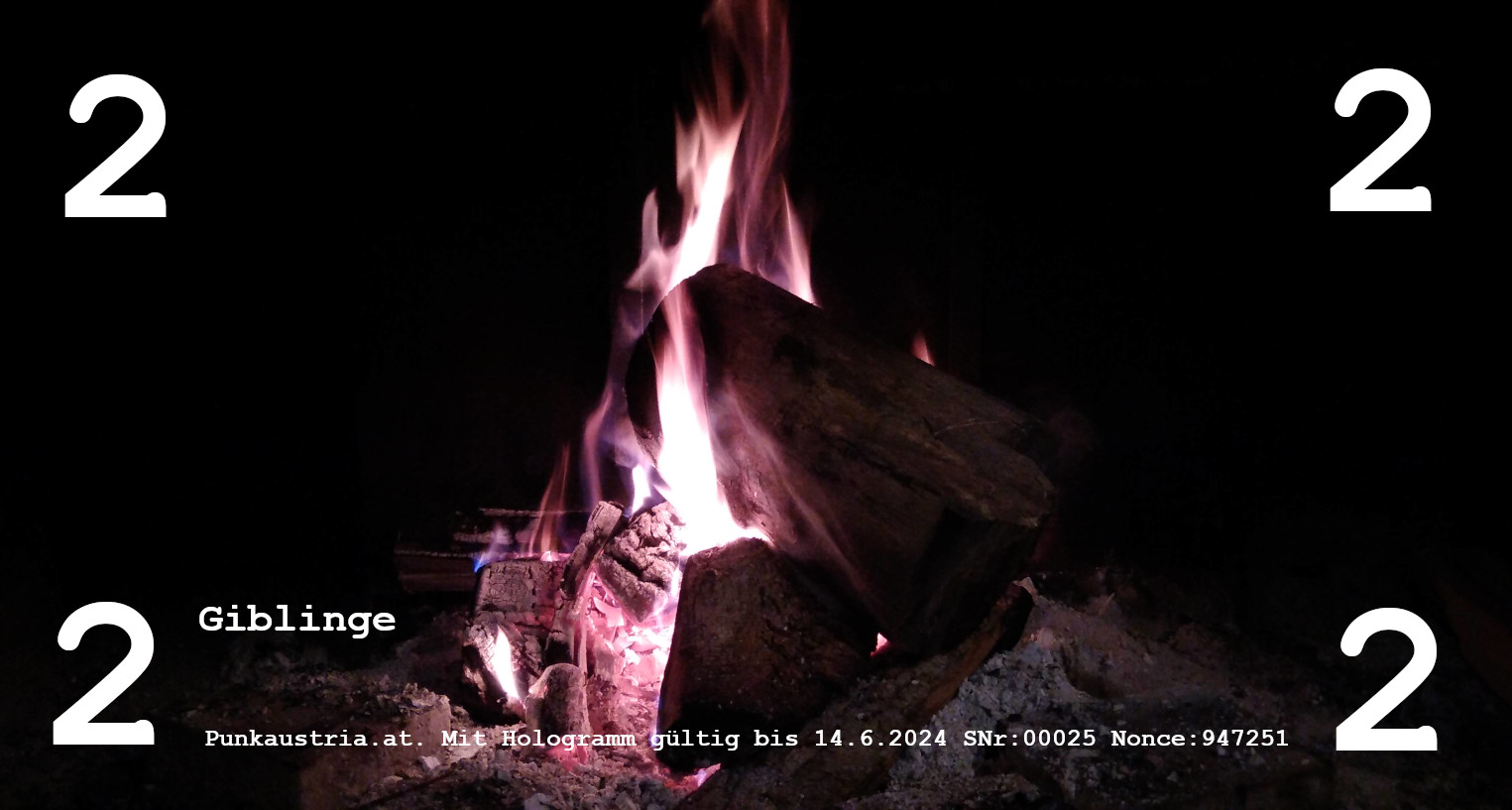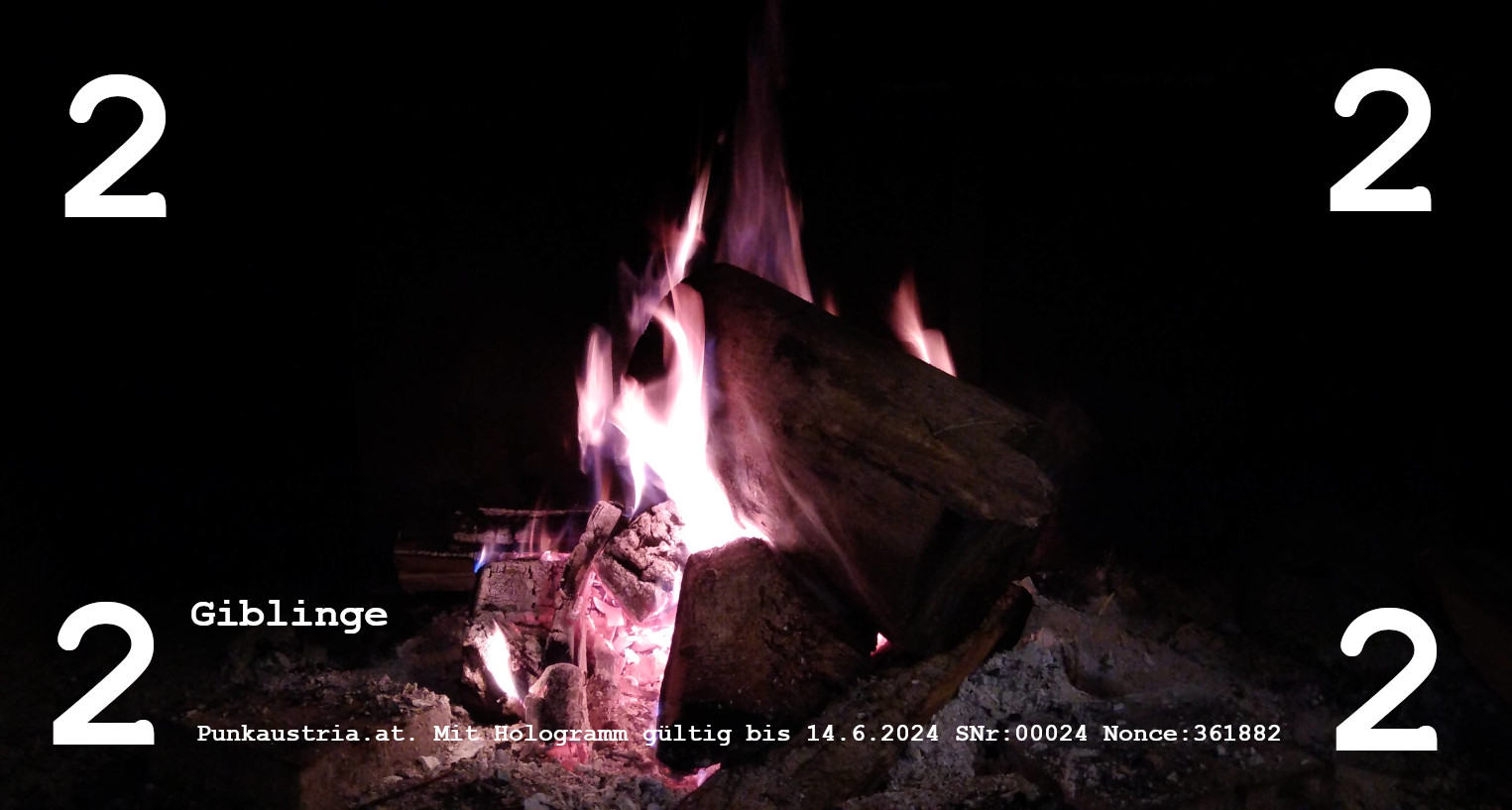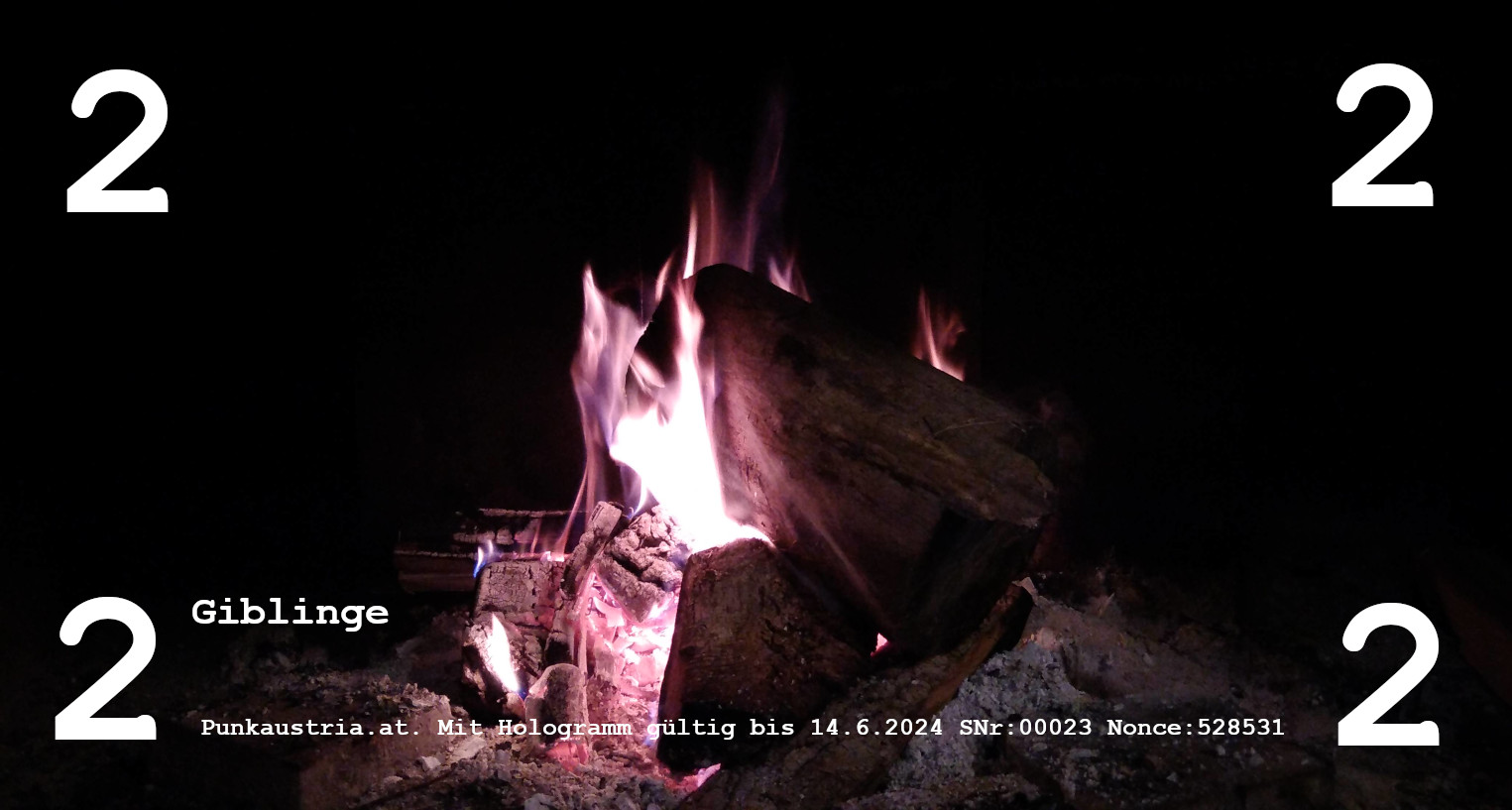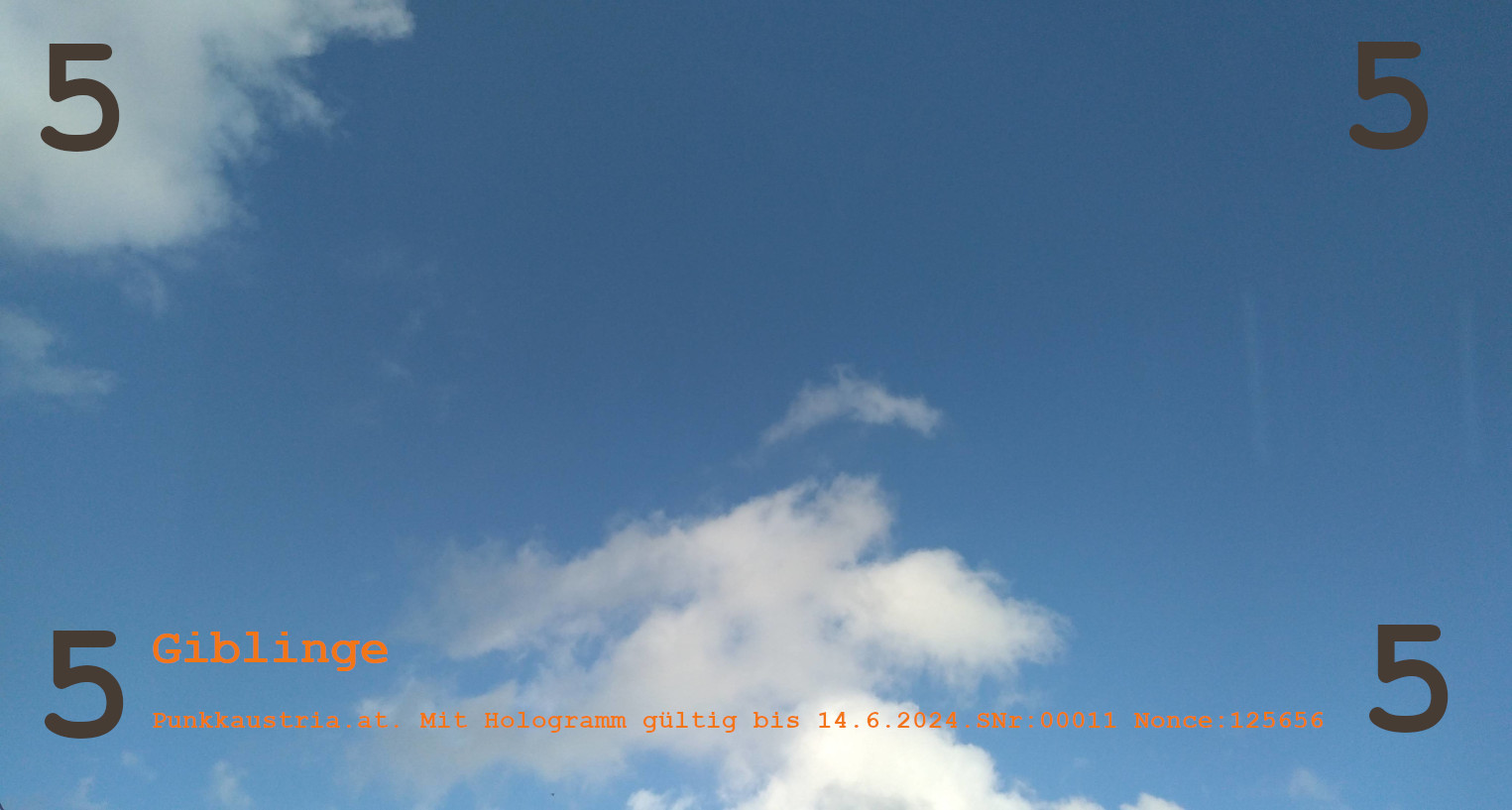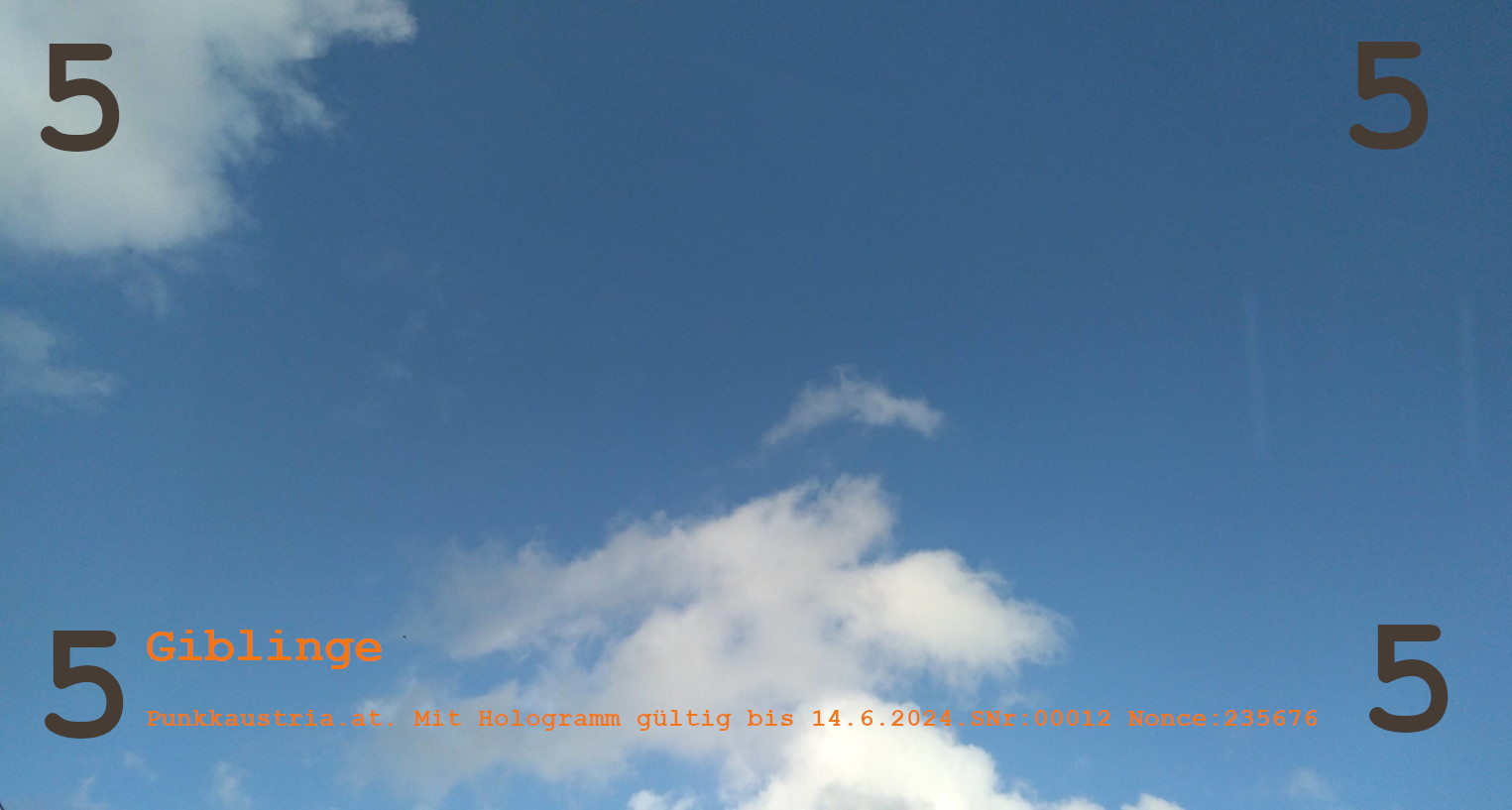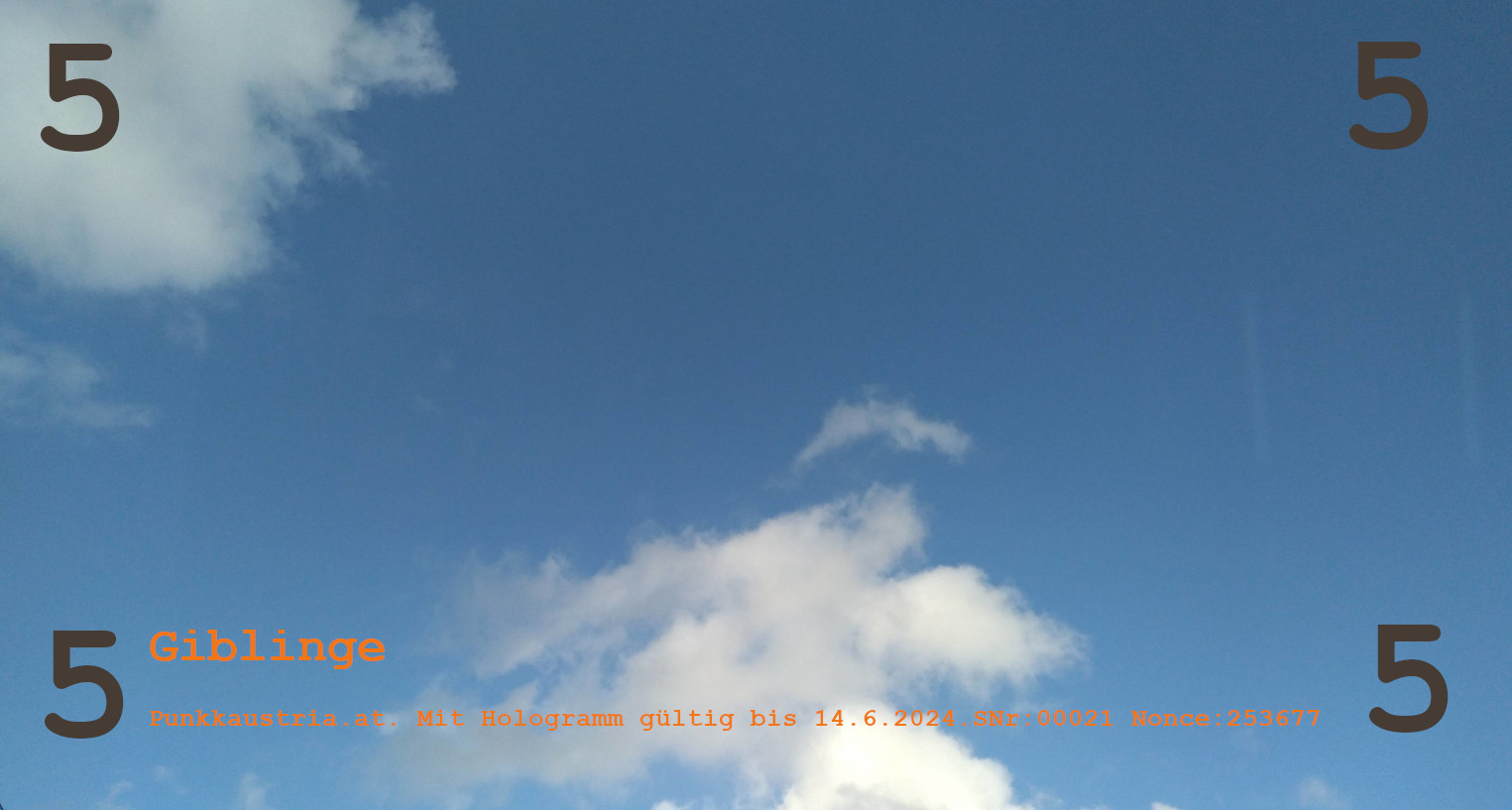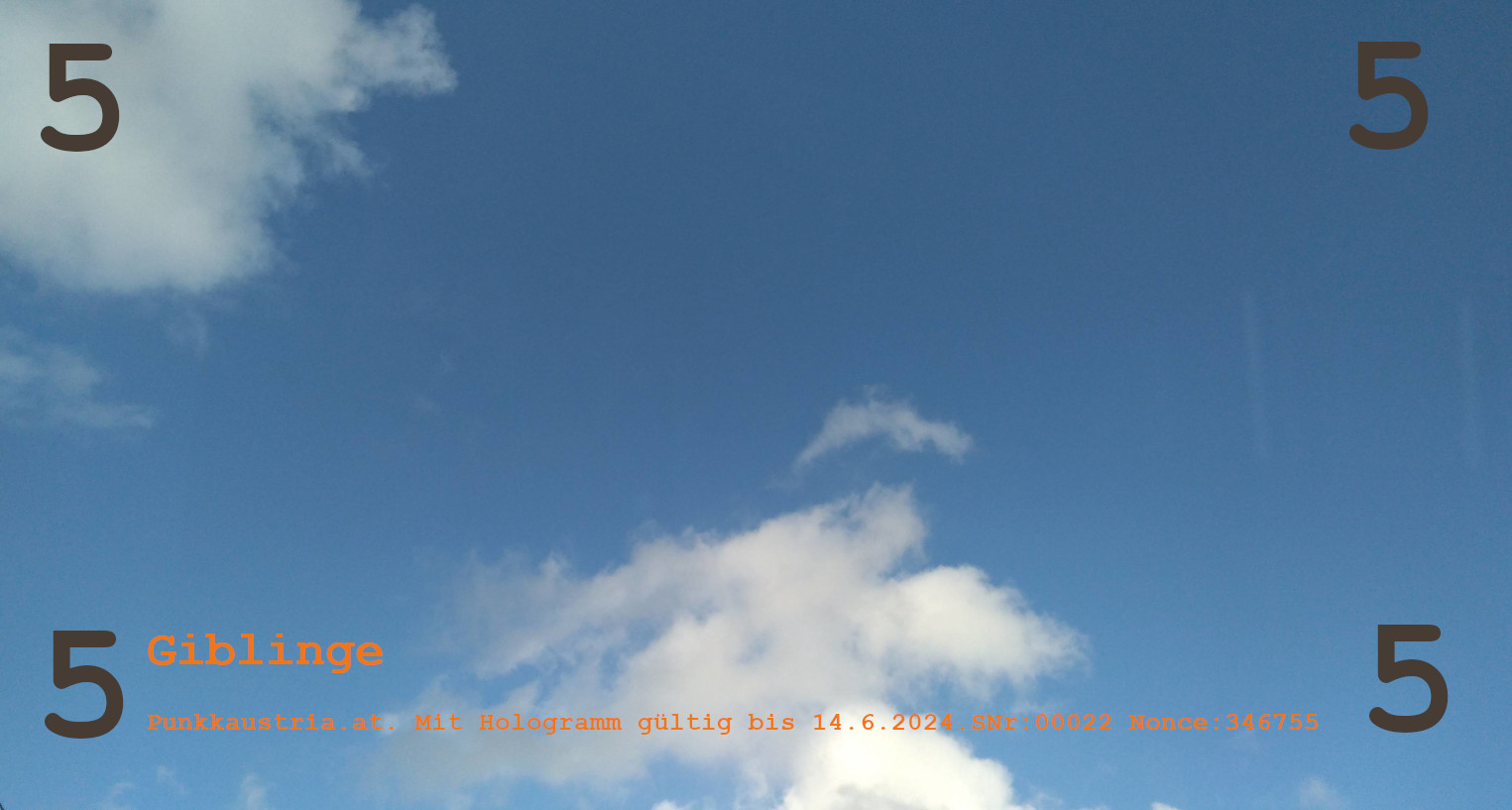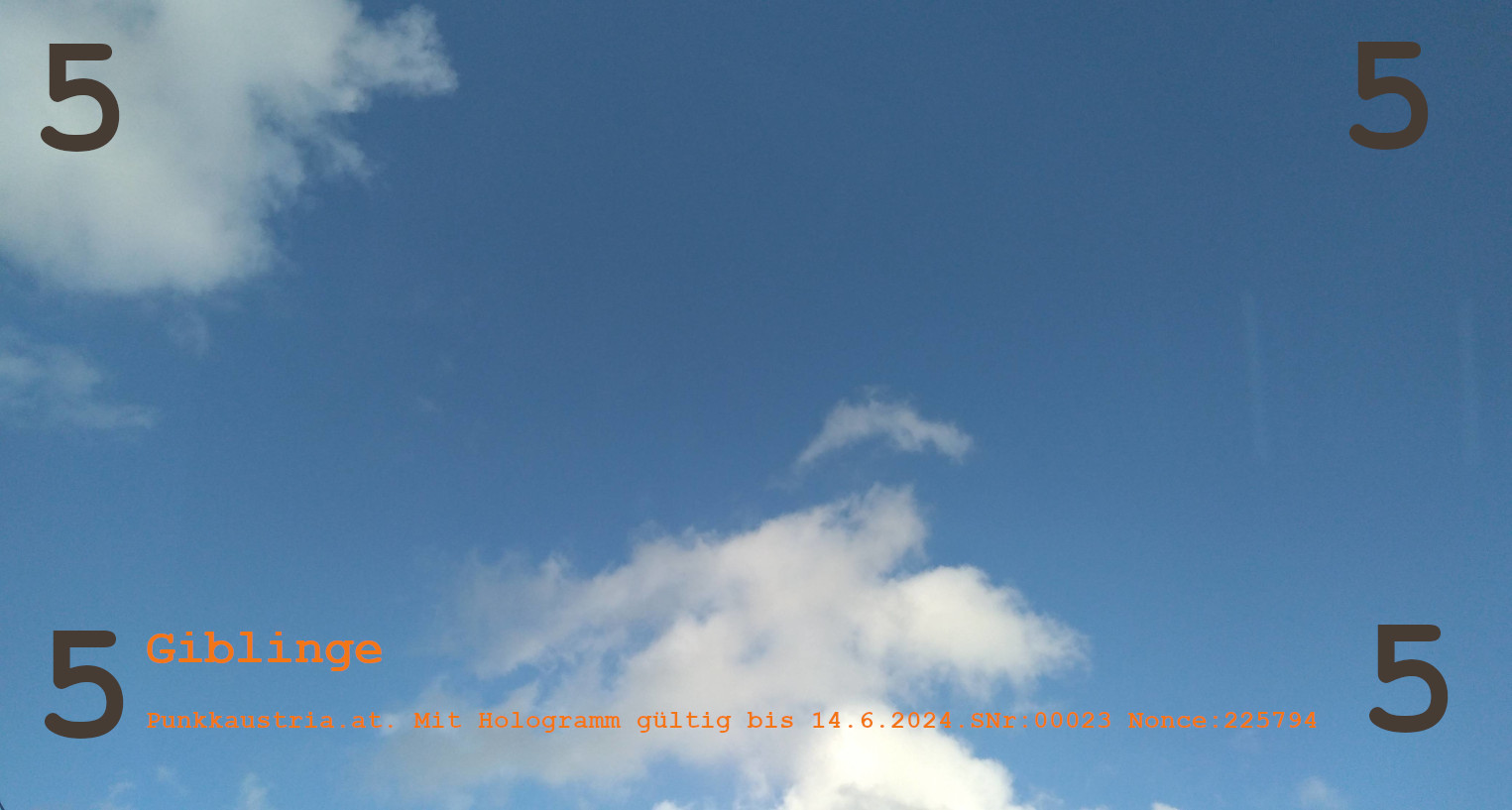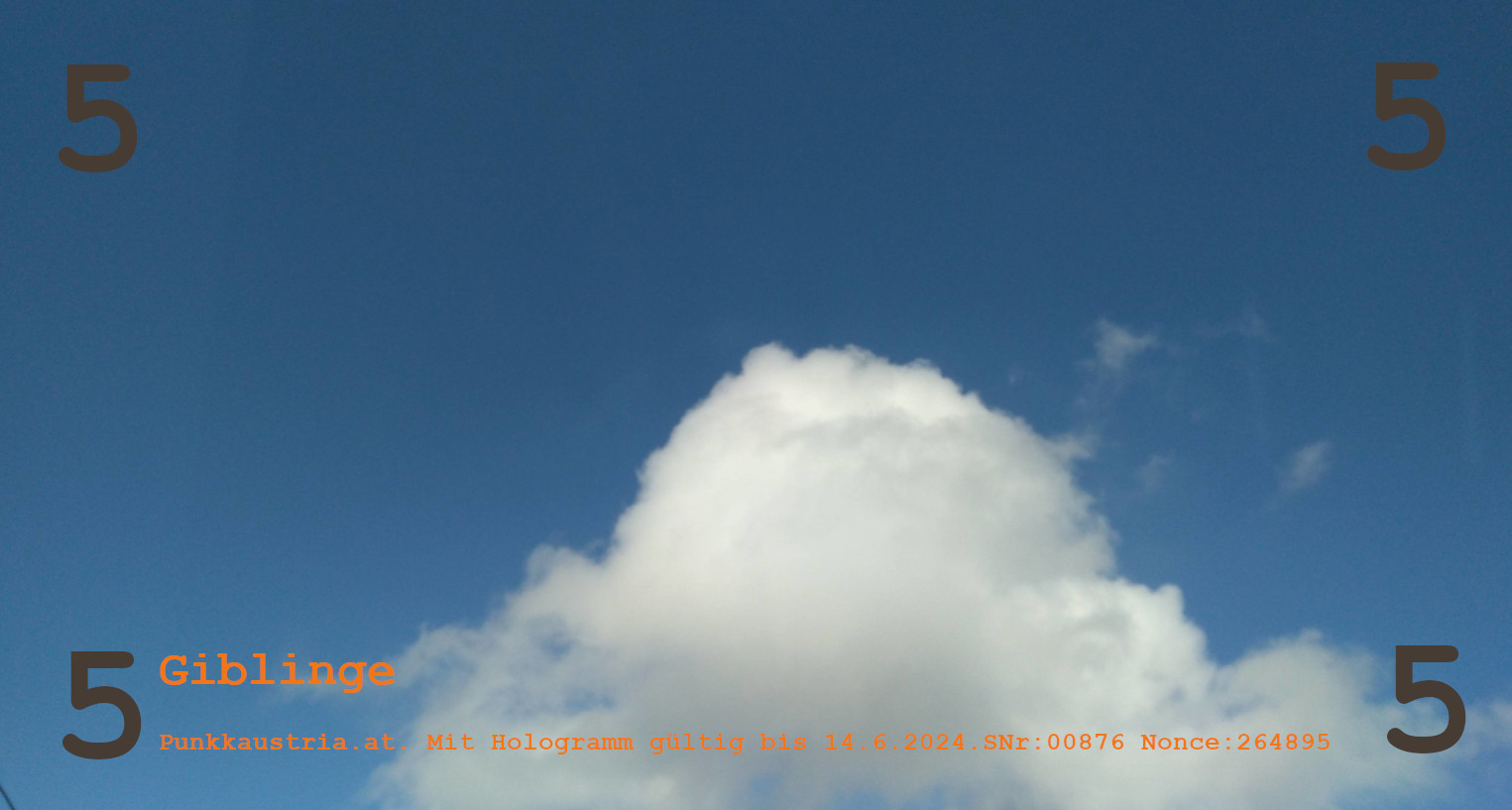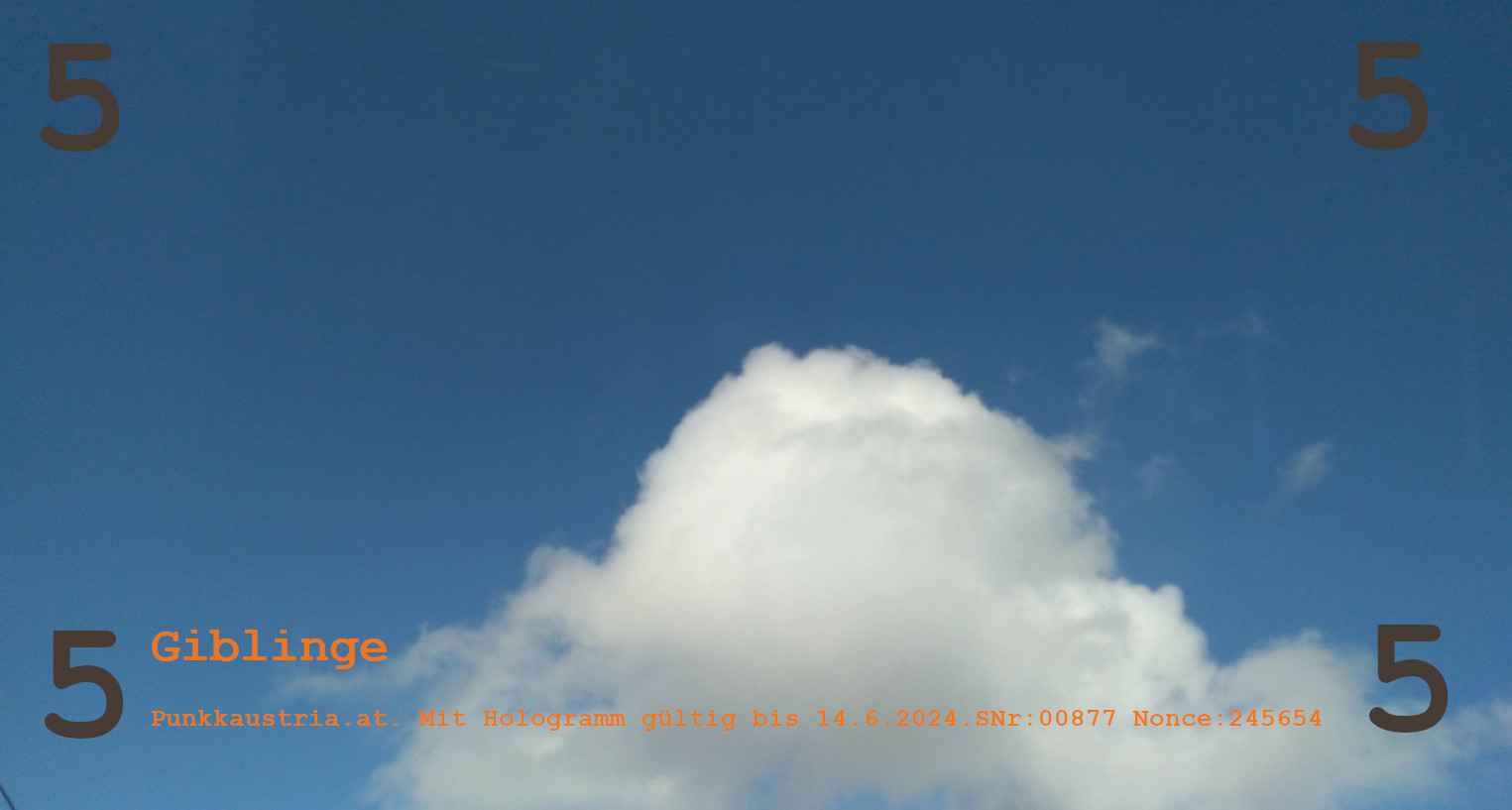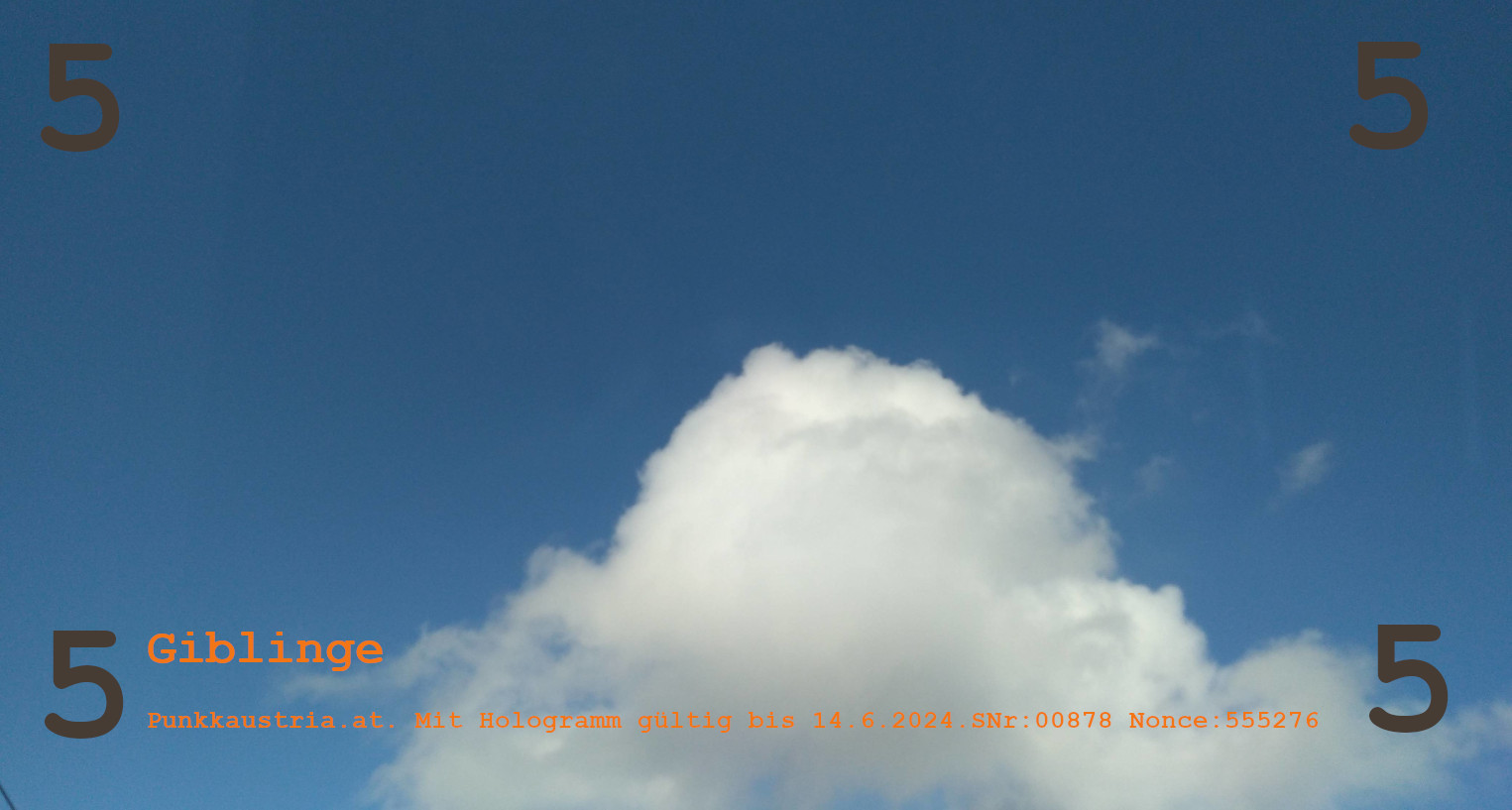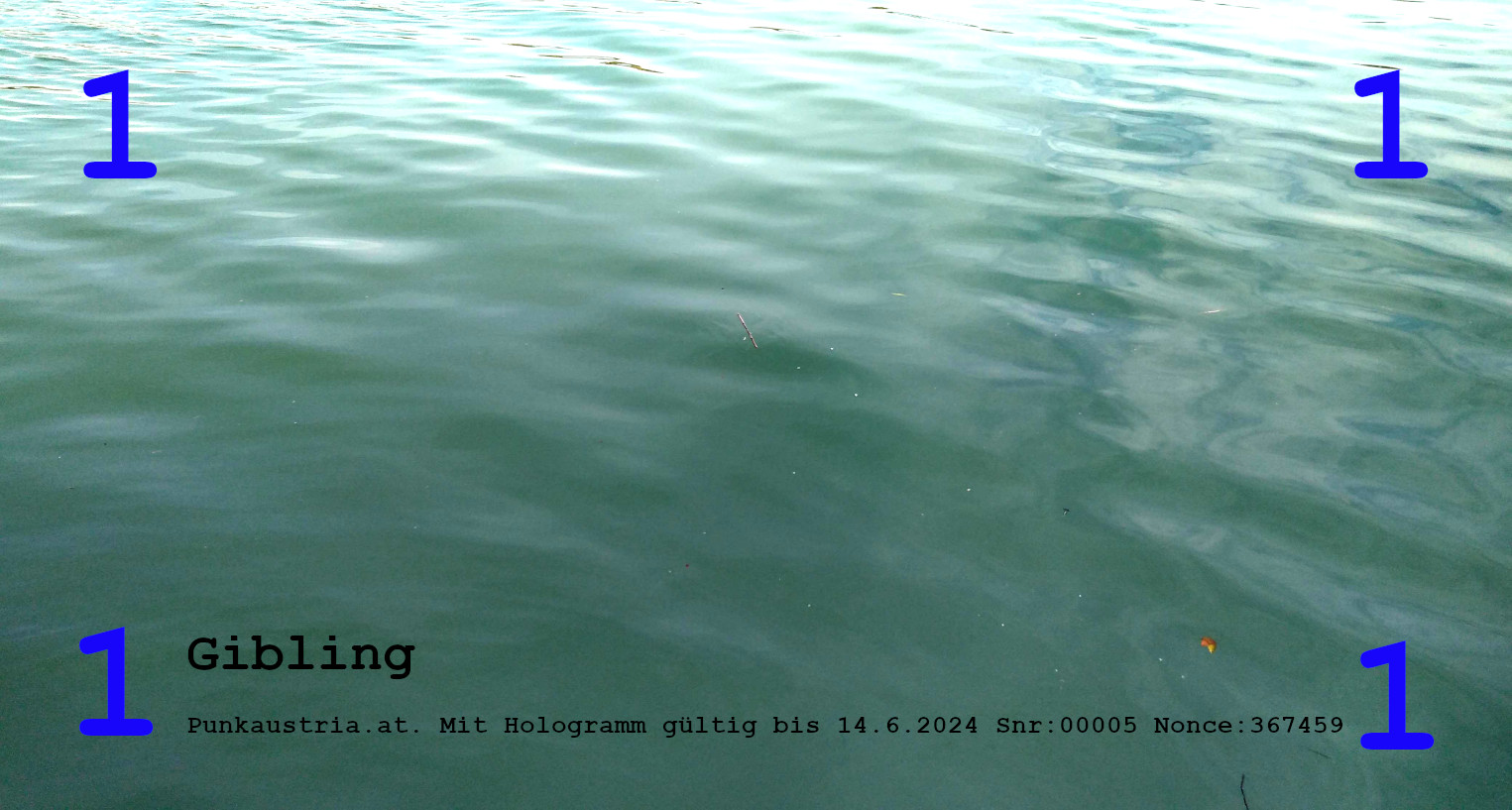Non-Fungible Picture
Our ECO system is in context to a process-oriented art
In 2022, the Gibling will be designed in Infolab with the inclusion of blockchain technology .
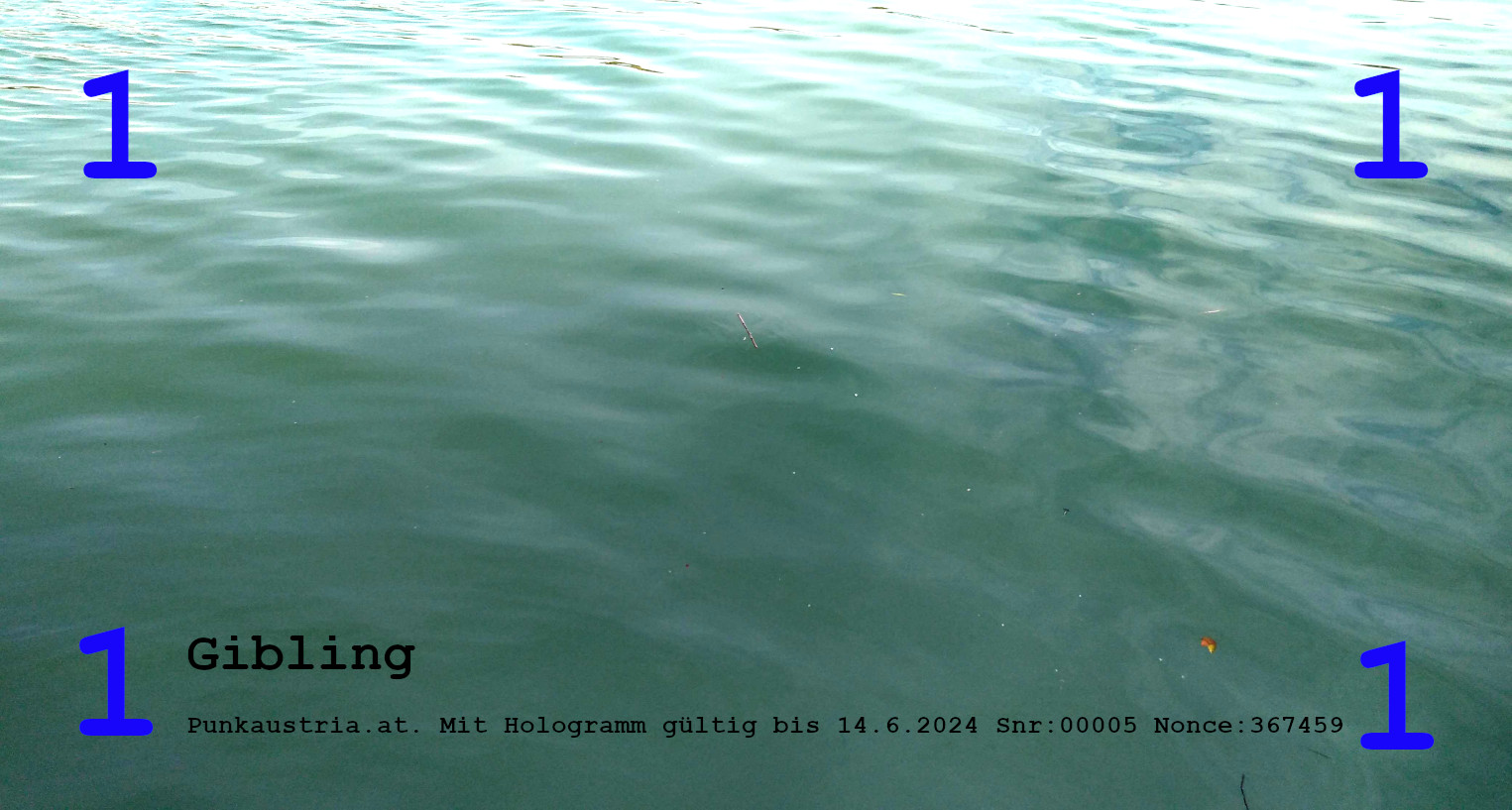

In 2022, each Gibling becomes a unique picture via its file. The "Punkaustria" initiated the Gibling as a circulation-secured currency in 2012. Because of this circulation-security, the old stock is destroyed every year, and this will not change in the future, however. For this reason, the Giblings have always been designed by other artists. In the tenth year we want to go a new way, in the discussion of the new values in the digital world we created in 2014 the cryptocurrency Givecoin. This cryptocurrency stands in opposition to the other cryptocurrencies and is therefore not traded on crypto exchanges.
After ten editions, we now connect the Gibling to the Givecoin. The gibling becomes an NFP via its digital carrier and the metadata stores givecoins and a certificate of authenticity. The Gibling with its hologram as a security feature can of course continue to be used as a means of payment in all our partner businesses. Each banknote shows a “Non-Fungible Picture”, a single cadre from a series photograph.
Each banknote not only becomes a unique analogue item via the serial image, but also requires the file of the image, or more precisely, the file from the front of the gibling. In the metadata of the file, among other things, the SHA256 checksum of the last image is stored in the current one. With this checksum all files are protected against manipulation.
Beside this checksum there are more metadata in the files: e.g. a givecoin address which is signed with a bitcoin address on the bitcoin blockchain, a serial number and a random number (nonce) which might be used in the future. Givecoins are stored on both addresses in the amount of the banknote. The givecoins can be fed back to the blockchain via a “private key” which is only printed on the back of the gibling to our givecoinwallet. This action will separate the file from the givecoin and “free” your image. All images and metadata of the files can be found here.
Example:
- On the 1-gibling, there is 0.5 givecoin on the bítcoin address and 0.5 givecoin on the givecoin address. This makes a total of 1 givecoin of the 1 givecoin note.
- On the 2-gibling is 1 givecoin on the bítcoinaddress and 1 givecoin on the givecoinaddress. This makes a total of 2 givecoins of the 2 gibling note.
- Adequatly there are givecoins on the 5 or the 500 gibling note.
The back of the Giblings
On the example of the 1 Gibling bill
Front of the 2 Giblinge
Nonce is a random number that only plays a role in reverse cryptography.
ATTENTION: A Gibling bill has only the equivalent value of EUROs if the hologram is stuck on the bill, only then it can be used to pay in one of our partner businesses.
The givecoin works as its own system and therefore has no expiration date. The issue will happen with the completion in spring 2022 and the image/givecoin has no expiration date.
front of the 5 gibling Note
Serialnumber from 10-12 and 21-23
7 minutes later serial number from 876-878
The reverse of the 5 Giblingschein has the same layout as the 1 Giblingschein - only with different values
Front side of the 1 Gibling bill
The motif - The Adriatic Sea - serial number: 5-9:
The circulation of all banknotes is limited by the serial number of 99999
This ECO system is designed to be expandable and allows a BTC or Satoshi donation to the bitcoin address printed on the Gibling/Givecoin bills. The amount goes to the central punk of Punkaustria and is subsequently passed on to the community. The current status of the bitcoin wallet can be queried here.
The blockchain in context to process art.
Like Planck time in our world, signed blocks of a blockchain create self-referential values in our information society. The ECO system of the Gibling/Givecoin should help us find points of orientation in the digital world.

